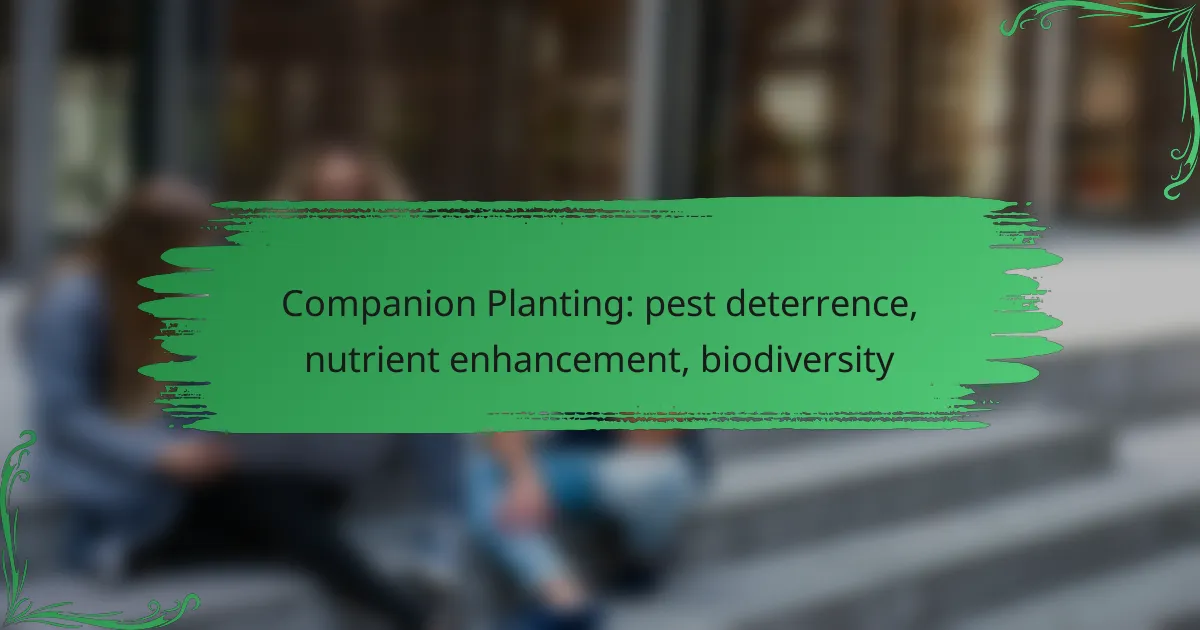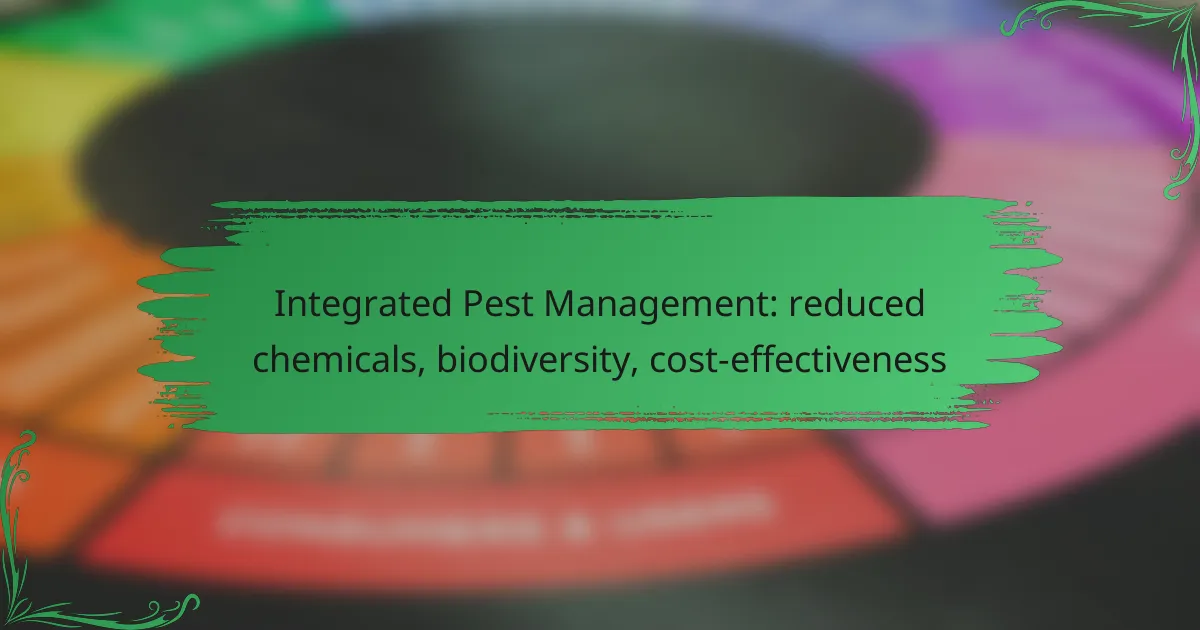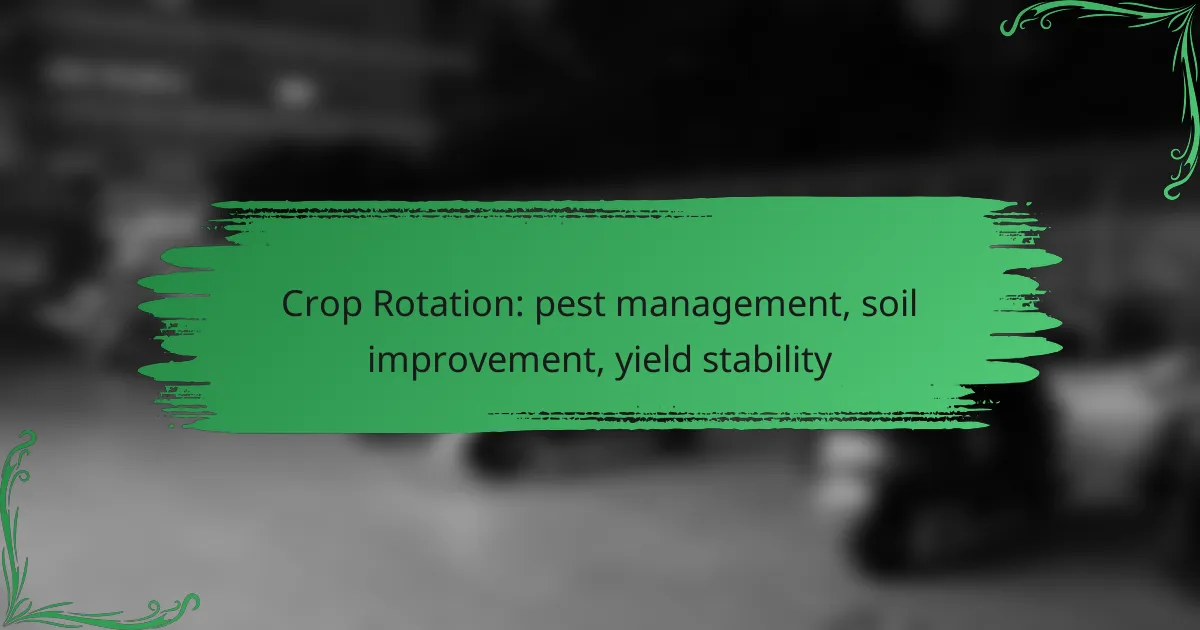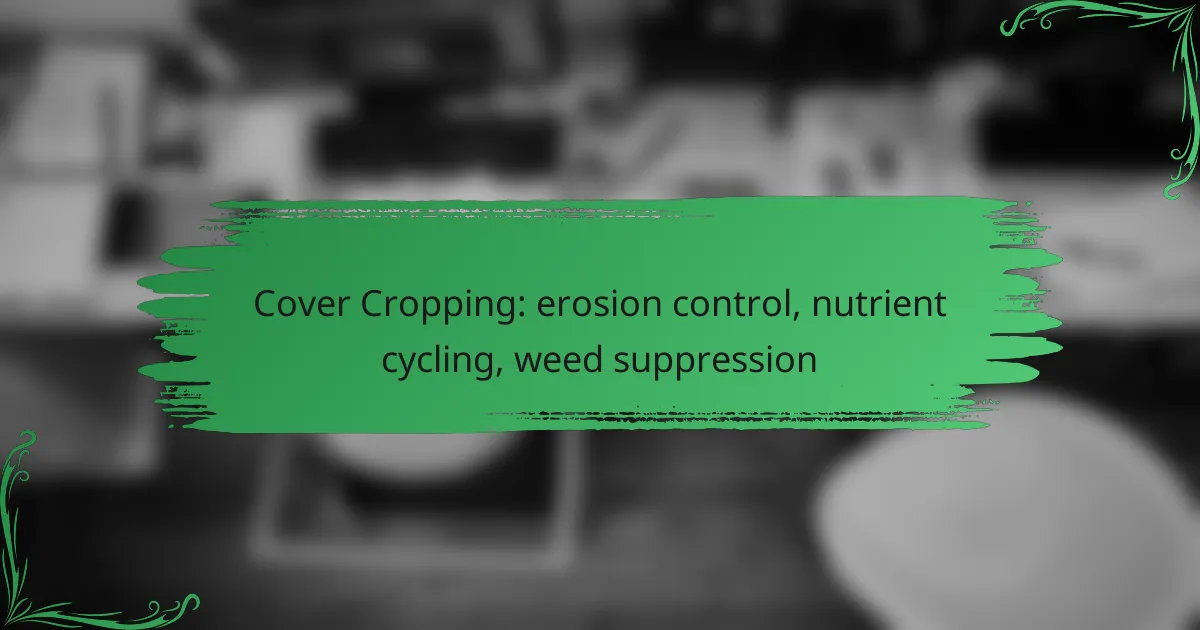Companion planting is a sustainable gardening practice that pairs plants to enhance pest deterrence, nutrient availability, and biodiversity. By strategically combining species, gardeners can naturally repel harmful insects, attract beneficial ones, and improve soil health. This method not only reduces reliance on chemical pesticides but also fosters a thriving ecosystem that supports a diverse range of organisms.
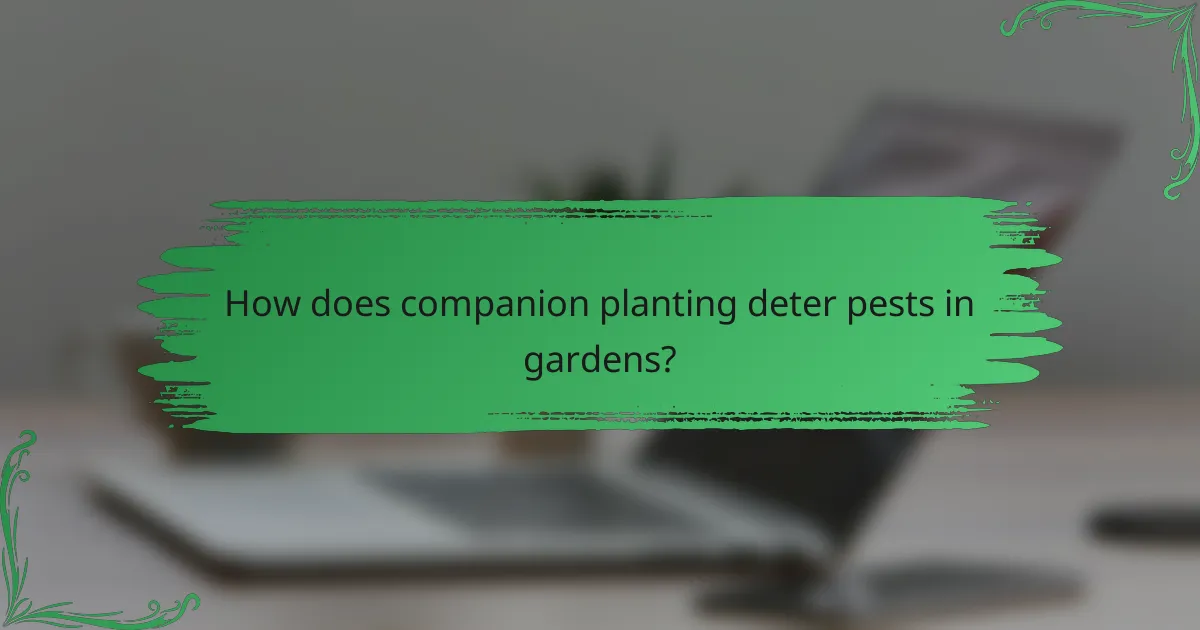
How does companion planting deter pests in gardens?
Companion planting helps deter pests by strategically pairing plants that repel harmful insects or attract beneficial ones. This natural pest control method enhances garden health and reduces the need for chemical pesticides.
Marigolds repel nematodes
Marigolds are known for their ability to repel nematodes, which are microscopic worms that can damage plant roots. By planting marigolds alongside vulnerable crops, gardeners can significantly reduce nematode populations in the soil.
To maximize their effectiveness, plant marigolds in rows or clusters near crops like tomatoes and peppers. This method not only protects the main plants but also adds vibrant color to the garden.
Basil wards off flies and mosquitoes
Basil is effective in repelling flies and mosquitoes, making it a valuable companion for many vegetable gardens. Its strong aroma confuses these pests, reducing their presence around plants like tomatoes and peppers.
For best results, intersperse basil plants throughout your garden or create a dedicated herb section. Regularly harvesting basil can also enhance its pest-repelling properties while providing fresh herbs for cooking.
Nasturtiums attract aphid predators
Nasturtiums serve as a trap crop by attracting aphids away from more valuable plants. This diversion helps protect crops like beans and cucumbers from aphid infestations, as beneficial insects are drawn to nasturtiums instead.
Plant nasturtiums at the edges of your garden or in between rows of susceptible crops. This strategy not only protects your main plants but also supports biodiversity by attracting pollinators and other beneficial insects.
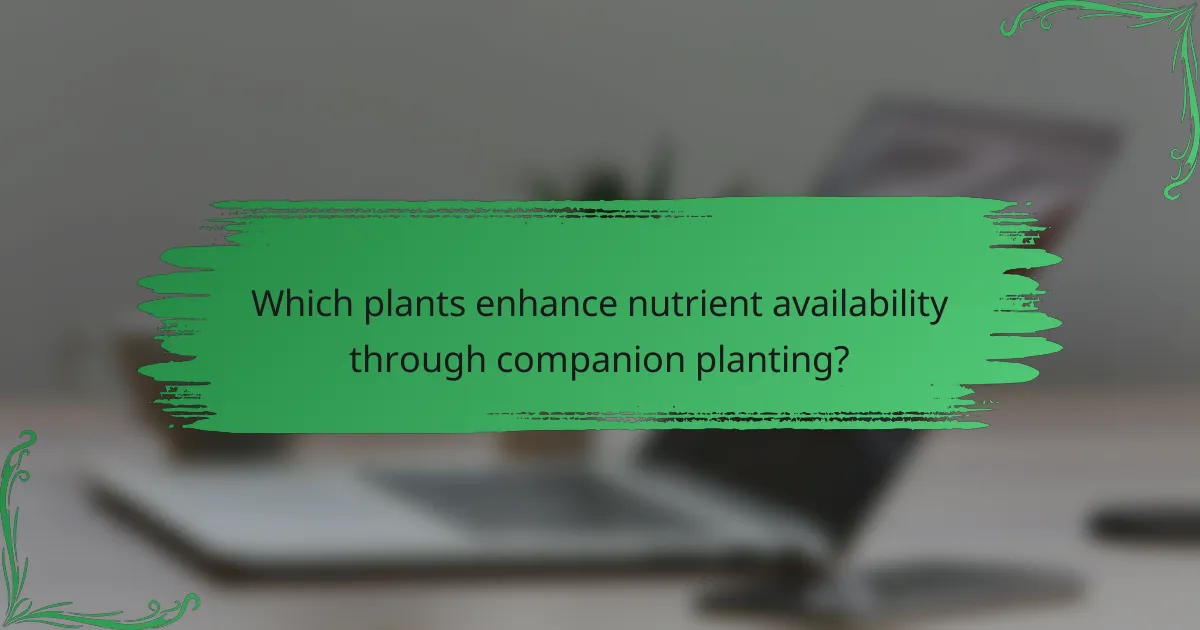
Which plants enhance nutrient availability through companion planting?
Companion planting involves pairing plants that mutually benefit each other, particularly in enhancing nutrient availability. Certain plants, such as legumes, comfrey, and chives, play significant roles in improving soil health and nutrient levels.
Legumes fix nitrogen in the soil
Legumes, including beans and peas, are known for their ability to fix atmospheric nitrogen into the soil through a symbiotic relationship with specific bacteria. This process enriches the soil, making nitrogen more accessible to other plants, which is crucial for their growth.
When planting legumes, consider rotating them with other crops to maximize their nitrogen-fixing benefits. Aim to plant legumes every few years in the same area to maintain soil fertility and health.
Comfrey enhances potassium levels
Comfrey is a dynamic accumulator, meaning it draws nutrients, particularly potassium, from deep within the soil and makes them available to surrounding plants. This herb can be used as a mulch or compost ingredient to improve soil nutrient content effectively.
To utilize comfrey, plant it in a dedicated area and periodically cut back its leaves to use as a nutrient-rich mulch around other plants. This practice not only enhances potassium levels but also improves soil structure.
Chives improve soil health
Chives contribute to soil health by repelling certain pests and attracting beneficial insects, which can enhance the overall ecosystem of the garden. Their roots also help aerate the soil, promoting better water and nutrient absorption.
Incorporate chives into your garden by planting them alongside vegetables like carrots and tomatoes. This not only supports soil health but also can improve the flavor and yield of neighboring plants.
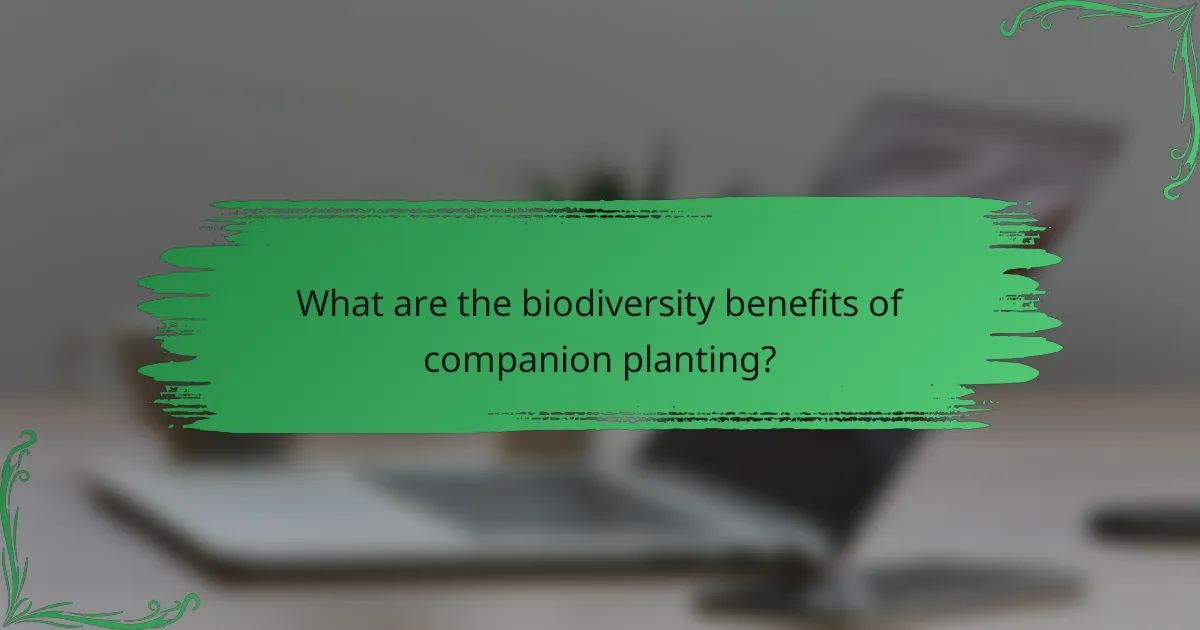
What are the biodiversity benefits of companion planting?
Companion planting enhances biodiversity by promoting a diverse range of plant species that support various organisms in the ecosystem. This practice can lead to healthier gardens and farms by improving pest control, nutrient availability, and overall ecological balance.
Increased pollinator attraction
Companion planting can significantly increase the attraction of pollinators such as bees and butterflies. By incorporating flowering plants alongside crops, gardeners can create a more inviting environment for these essential species, which helps improve fruit and seed production.
For example, planting marigolds or borage near vegetable crops can draw in pollinators, enhancing the overall yield. Aim for a mix of flowering plants that bloom at different times to provide a continuous food source throughout the growing season.
Enhanced soil microbial diversity
Companion planting can enhance soil microbial diversity, which is crucial for nutrient cycling and soil health. Different plants can contribute various organic materials and root structures that support a wider range of soil microorganisms.
For instance, legumes like clover or beans can fix nitrogen in the soil, benefiting neighboring plants. Incorporating a variety of plants can help maintain a balanced ecosystem in the soil, leading to improved nutrient availability and plant growth.
Improved ecosystem resilience
By promoting biodiversity, companion planting improves ecosystem resilience against pests and diseases. A diverse plant community can disrupt pest life cycles and reduce the likelihood of widespread infestations.
For example, planting garlic among roses can deter aphids, while diverse root systems can help prevent soil erosion and enhance water retention. This resilience allows gardens and farms to withstand environmental stressors more effectively, ensuring sustainable production over time.

How can I choose the right companion plants for my garden?
Choosing the right companion plants involves understanding which plants work well together to enhance growth, deter pests, and improve biodiversity. By considering compatibility, growth habits, and local climate, you can create a thriving garden ecosystem.
Consider plant compatibility
Plant compatibility is crucial for successful companion planting. Some plants can enhance each other’s growth, while others may compete for nutrients or space. For example, tomatoes and basil are known to thrive together, as basil can repel pests that target tomatoes.
To determine compatibility, research which plants have beneficial relationships. Resources like gardening books or local extension services can provide valuable insights. Avoid planting species that are known to inhibit each other’s growth, such as onions and beans.
Assess growth habits and space requirements
Understanding the growth habits and space needs of your plants is essential for effective companion planting. Some plants grow tall and may shade others, while others spread out and require more ground space. For instance, corn provides height for climbing beans, which can benefit from the support.
When planning your garden layout, consider the mature size of each plant and their growth patterns. Use vertical gardening techniques for vining plants to maximize space. A simple grid layout can help you visualize how much room each plant will need.
Evaluate local climate conditions
Local climate conditions significantly influence the success of companion planting. Factors such as temperature, rainfall, and sunlight can affect plant health and growth. For example, heat-loving plants like peppers may not thrive in cooler climates.
Research your local climate zone and select companion plants that are well-suited for your area. Utilize native plants, as they often require less maintenance and are better adapted to local conditions. Keep in mind seasonal variations and adjust your planting schedule accordingly to ensure optimal growth.

What are the best companion planting combinations for vegetable gardens?
Effective companion planting combinations can enhance pest deterrence, improve nutrient uptake, and increase biodiversity in vegetable gardens. Selecting the right pairings can lead to healthier plants and better yields.
Tomatoes and basil
Tomatoes and basil are a classic companion planting duo that benefits both crops. Basil can help repel pests like aphids and whiteflies that commonly affect tomatoes, while also enhancing their flavor. Plant basil nearby to create a mutually beneficial environment.
When planting, space tomatoes and basil about 12-18 inches apart to allow for adequate growth. This combination thrives in warm weather, so ensure both plants receive plenty of sunlight and consistent watering.
Carrots and onions
Carrots and onions work well together as they deter each other’s pests. Onions can repel carrot flies, while carrots can mask the scent of onions, making it harder for pests to locate them. This pairing can lead to healthier crops and improved yields.
For optimal results, plant carrots and onions in alternating rows or clusters. Ensure they have sufficient space, about 6-8 inches apart, to grow without competing for nutrients. Regular weeding and watering will support their growth.
Cabbage and dill
Cabbage and dill are effective companions that can enhance pest management. Dill attracts beneficial insects like ladybugs and lacewings, which prey on aphids that may harm cabbage. This relationship promotes a healthier garden ecosystem.
When planting, position dill a few feet away from cabbage to prevent competition for resources, as dill can grow quite tall. Both plants prefer similar growing conditions, so ensure they receive full sun and well-drained soil for optimal growth.
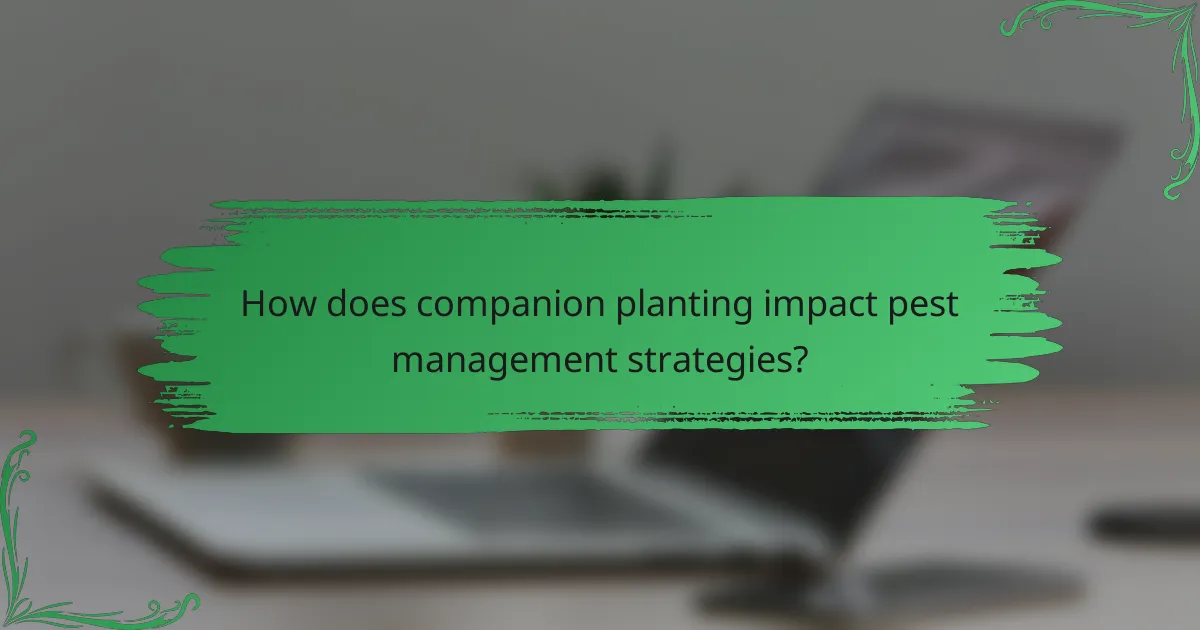
How does companion planting impact pest management strategies?
Companion planting significantly enhances pest management strategies by utilizing the natural relationships between plants to deter pests and promote beneficial insects. This method reduces the need for chemical interventions, fostering a healthier ecosystem in gardens and farms.
Reduces reliance on chemical pesticides
Companion planting minimizes the need for chemical pesticides by naturally repelling harmful insects through specific plant pairings. For instance, marigolds are known to deter nematodes and aphids, making them an excellent companion for vegetables like tomatoes and peppers.
By integrating diverse plants, gardeners can create a balanced environment that attracts beneficial insects such as ladybugs and lacewings, which prey on pests. This natural approach not only protects crops but also promotes biodiversity, contributing to a more resilient agricultural system.
To effectively reduce pesticide use, consider planting combinations like basil with tomatoes or garlic with roses. These pairings can enhance pest resistance while improving overall plant health, leading to a more sustainable gardening practice.
